To Belong Is Not Enough: Why We Must Move Towards Mattering
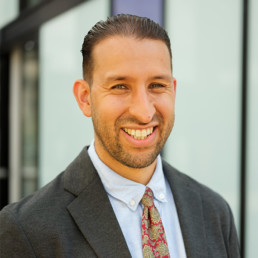
Written by Mohamed Abdallah
With almost two decades of experience, Mohamed started his journey in youth work and pupil referral units before spearheading groundbreaking inclusive practices and systems as a leader in an 'Outstanding' all-through mainstream school. Driven by a relentless commitment to positive change, Mohamed now dedicates his efforts to collaborating with school leaders across the nation as the Head of the Inclusive Leadership Course at The Difference.
“No one would care if I weren’t here.”
I can remember the words hitting me hard. As Designated Safeguarding Lead there were immediate red flags, but on a human level it broke my heart.
100% attendance, great progress, and never in trouble. On paper he belonged – but in reality he thought nobody cared.
Across the country, I hear the language of belonging increasingly referenced in discussions about student engagement, wellbeing, and success. And I welcome it. It’s a refreshing shift in our narrative about the student experience.
Still, something didn’t feel right. Then, it clicked.
It is not enough to simply belong; you should also matter.
My experience has shown me that a student can belong to a school community without ever feeling that their presence or contributions truly matter. A friend recently shared a US study with me that revealed a surprising finding: a sense of ‘belonging’ to a school community did not significantly affect academic performance. But instead there were other factors that determined success, such as participation and self regulated learning.
Think about it this way: You belong to a gym, but do the regulars know your name? You belong to a workplace, but do your ideas shape the way things are done? You belong to a school, but when you are absent, is there a noticeable void?
Mattering is more than belonging to a place or a community; it is about your significance.
One of the most prominent academic advocates for mattering is the US community psychologist Isaac Prilleltensky. He argues that developing a strong sense of mattering depends on two things: feeling you are valued, and feeling that you add value – whether that be within your workplace, your community, your family, or your friendship group. In the UK, my good friend Luke Billingham has been one of the most influential thinkers and writers on young people and mattering.
The Three Components of Mattering in Schools
After multiple voice notes back and forth, Luke and I sat down to discuss this matter (see what I did there!), and we asked:
If a student stopped coming to school tomorrow, would they feel like their absence was noticed?
Does every student have positive and affirming relationships with peers and at least one adult?
Are students actively shaping the school environment, or are they simply complying with expectations?
These questions helped us think more deeply about mattering. Of course, students should belong. But would we be satisfied as school leaders with 100% attendance, high attainment, and zero suspensions, yet students still told us, “No one would care if I weren’t here”?
They should feel they matter.
Reflecting on our experiences in different schools, Luke and I identified some key factors which we think enable students to develop mattering; Voice, Relationships, and Participation.
- Voice: Too often, schools claim to prioritise student voice while keeping real decision-making at the leadership level. But voice is not just about being heard. Schools must embed student experience and perspectives into decision-making, not just through surveys, but by creating opportunities for meaningful dialogue and change. Even when student perspectives challenge us, they offer uncomfortable truths we must engage with. When students see their input shape school culture, they matter.
- Relationships: A student might belong to a school, but do they have relationships that affirm their worth? Schools could cultivate opportunities for positive peer relationships to create strong social bonds, and to ensure every student has at least one trusted adult. Relationships built on trust and recognition, and environments where students feel valued and connected.
- Participation: Mattering isn’t just about feeling noticed, it’s about feeling needed. Students need opportunities to contribute meaningfully to their school communities. This goes beyond enrichment clubs; it means ensuring that students are actively shaping their environments. Whether through student-led campaigns, or engaging with the local community, authentic participation allows students to see their impact.
Why Mattering Matters for Inclusion
I worry that belonging is being used as a catch-all solution for inclusion, or dare I say it, a form of soft inclusion. For many students from marginalised backgrounds, belonging can feel conditional. They may be required to turn up, but do they feel like their presence and identity are essential? Do they see themselves reflected in the curriculum? Are their voices shaping school systems? Are their experiences acknowledged and valued?
Mattering addresses these questions by ensuring that students are not just included, but recognised as integral members of their schools. For students from underrepresented backgrounds, the feeling of mattering can be a protective factor against marginalisation and disengagement.
If we stop at belonging, we risk creating schools where students exist but don’t thrive, they comply but are disengaged, are included but unseen. The real challenge for schools isn’t just inclusion. It’s significance. Instead of asking, ‘Do our students belong?’ ask, ‘Do they know they matter?’
How My Experiences with ADHD in Different Workplaces Led to a PhD and Training Programmes for Businesses and Schools

Written by Steve Ollington
ADHDer studying the pros and cons of ADHD in the workplace, with 19 years in digital marketing, and more recently running ADHD training.
I’m Steve Ollington, and I’m currently undertaking a PhD at Swansea University, supervised by Professor Brian Garrod, focusing on ADHD in the workplace. My research journey started with a personal observation: despite having a consistent skill set and high level of experience in my profession, I noticed that my performance varied significantly depending on the workplace environment. In some settings, I thrived; in others, I struggled to achieve the same level of productivity and job satisfaction. This discrepancy led me to examine how different workplace environments interact with ADHD traits, not just in terms of challenges, but also in enabling the often-overlooked strengths associated with ADHD.
Observing the Role of Environment in My ADHD Performance
In some roles, I was given autonomy and flexibility, which allowed me to excel. I had the freedom to approach tasks creatively, was trusted by managers, and felt supported by colleagues who understood different thinking styles. In these settings, I could harness the strengths that come with ADHD, for example innovative thinking and alternative (but effective) problem-solving. My performance was high, and I felt truly engaged in my work.
In other workplaces, however, I encountered rigid structures and strictly enforced processes with little flexibility. There was often limited understanding of alternative approaches to work, and I felt pressured to conform to methods that didn’t align with how I function best. This rigid structure amplified the challenges of ADHD, while stifling my ability to bring my strengths to the forefront. In these environments, I found myself struggling as a result.
Recognising the Potential of ADHD Strengths in the Workplace
Through these contrasting experiences, I realised that while my ADHD challenges remained constant, my ability to utilise my strengths was significantly influenced by the environment, including the acceptance of my differences by those around me. Some workplaces allowed me to maximise my capabilities, while others hindered them. This insight led me to pursue a PhD, focusing on ADHD in professional environments. Rather than just examining the difficulties faced by ADHD employees, I wanted to highlight the strengths and explore the specific workplace conditions that either foster or inhibit these strengths.
Research supports the notion that ADHD brings unique strengths. Dr Heiner Lachenmeier’s book ADHD and Success at Work, for instance, describes how people with ADHD often have a “wider breadth of association” due to a reduced filtering of incoming information, which enhances creativity and problem-solving abilities.
Research by Dr Nancy Doyle on neurodivergence in the workplace, combined with studies on creativity and imagination by White and Shah demonstrate that ADHD individuals can excel in environments that embrace cognitive diversity. Creativity, for instance, is often heightened in ADHD individuals due to the way they process information, thinking beyond traditional boundaries. However, these strengths can only be fully realised in workplaces that are flexible, supportive, and open to alternative working styles.
Dr Edward Hallowell also discusses this in his book Driven to Distraction at Work, noting that ADHD can fuel high energy, hyperfocus, and enthusiasm when supported in the right way. Additionally, Prof Amanda Kirby and Theo Smith, in The Power of Neurodiversity at Work, as well as Leanne Maskell in ADHD Works at Work, advocate for environments that understand and embrace neurodiversity, highlighting the benefits employees with ADHD can bring to the workplace.
Developing Targeted ADHD Training Courses
This studying inevitably led to increasing my own understanding of ADHD and its impact on my work, and the more I learned, the more it became evident that many workplaces lack the necessary understanding and support for neurodivergent employees. Despite increased emphasis on diversity and inclusion, neurodivergence (including ADHD) is still very often misunderstood, with much of the current training being very broad and general, not focusing enough on individual conditions. I saw, and experienced, the need for specific training to address not only the challenges but also the strengths associated with ADHD, and the resulting understanding from workplace peers who might have neurotypical only expectations of skills like communication and approaches to tasks.
This realisation led me to transform my PhD literature review into two targeted training courses. The first course is designed for businesses, specifically aimed at training managers, HR, and colleagues of people with ADHD, focuses on understanding ADHD from a balanced perspective, covering how ADHD employees think differently, the areas in which they may need support, and how workplaces can harness their unique strengths. It encourages flexibility, trust, and space for creativity, which are key to enabling ADHD employees to thrive.
The second course is geared towards educators, providing ADHD training for teachers, TAs, and SEN staff, to equip them with the knowledge to reassure ADHD children and teenagers on how ADHD doesn’t have to limit them as they grow up, and that in fact they their ADHD also brings strengths, such as creative thinking and resilience. By emphasising these positive traits, educators can help ADHD students see their future as one filled with potential and opportunity.
The Diversifying the Curriculum Conference 2025

Written by Bennie Kara
Co-Founder of Diverse Educators
At Diverse Educators’ Diversifying the Curriculum Conference, Hannah Wilson started the event by reminding us all that the work on ensuring curriculum is deep, broad and diverse is not done yet. Our speakers certainly reminded us just how much we can do to make sure that we are constructing a curriculum for all.
Christine Counsell’s opening keynote was joyful to listen to, not least in part due to her incredible depth of awareness and knowledge about the humanities curriculum. She connected effective learning to effective curriculum design and spoke about how thoroughness is possible and how thin unconnected content does not serve the needs of our children. She reminded us that the humanities are replete with story and that each lesson should have children longing for the next one. In her keynote, she recognised the need to work hard to deliver unfamiliar content but also how that hard work pays off when students have experienced language, symbols and narratives repeatedly throughout the curriculum from year 3 onwards in her words meaning comes from relationships with everything else and that the curriculum should be a series of constant bursts of energy fueled by indirect residents and anticipation.
In Emily Folurunsho’s session, we were treated to an in-depth look at Black British history and how important it is to ensure that British students learn about Black British history and not just the history of Black Americans. She was clear in her message that the first time that students encounter a black figure from history should not be through the lens of enslavement. She talked us through three themes that allow us as educators to give a fuller picture of Black British history as possible. She talked about figures from the pre-Anglo-Saxon past, from the Tudor age and from the Victorian age. It is important, she said, that we study Windrush and its legacy, but that we also contextualise Windrush in light of broader race relations in the mid 20th century. She talked compellingly about how Black British history has a connecting influence in terms of providing representation and presence for black students, touching on her own history in Britain and how she personally learned about Black history. She went on to explore how Black British history is challenged in its presence and its validity. To ensure that Black British history is truly embedded into the curriculum, we must seek sources from Black voices and we must refer to Black historians.
In David Bartlett’s session on the global boyhood initiative, we learned about the need for healthy masculinity and healthy emotions in boys and how that goes hand in hand with healthy gender expectations. He explored what healthy gender expectations look like and how to facilitate young people in breaking free from limitations. In his session he explored gender differences and gender stereotypes, asking: what is nature and what is nurture? He highlighted the idea of pink and blue roles in the development of gender identity and responsibility.
Dana Saxon’s session on roots and relevance started with Dana’s personal experience of history as a subject. She talked about how history was not for her in her early experiences and how she felt that her history had been erased. It was only as an adult that she started family history research and that gave her a sense of personal ownership of her story and the ability to create and curate the family archive. She explored the disconnect in history teaching, asking who decides which histories are more important and invited us to consider who is remembered and who this suggests matters. She was clear in her message that history has been distorted, disfigured and destroyed and that erased histories disempower people. She stressed the need to find untold stories and the stories of migration because there are empowering stories hidden deep in our archives. It is a way, she said, of connecting the dots and answering the questions: how did we get here and why does it matter?
Samantha Wharton spoke about Black British literature. She referenced her work and resources on Leave Taking by Winsome Pinnock. Focusing on this text, she explored the context of Pinnock’s play and how teachers can take a cross curricular approach in delivering lessons on it. The text, according to Wharton, is a valuable insight into shared immigrant experiences, family dynamics, the generation gap and matriarchal figures, as well as themes of education and what is deemed sub normal. She encouraged us to go beyond the classroom when exploring literary texts like Leave Taking. She referenced the work of Lit in Colour, outlining the statistics on representation in literature and explored how a simple audit activity can develop thinking about diversity in the curriculum.
Krys McInnis’ session touched on the journey between diversifying the curriculum and decolonizing the curriculum. He asked us to consider positionality in approaching this process, stressing that all people have lived experience and we all have different starting points when undertaking curriculum reform. He spoke compellingly about redistributing power, centring the voices of the colonised and challenging the notion of who holds knowledge and how we make space for marginalised voices and epistemologies. He told us that unlearning is needed and that we need to be willing to adjust, not just approach the process of decolonization as a road map or a checklist so that we can say we are done. In essence he asked us to rethink knowledge and also how language is used today to define power and perspective.
I finished my day listening to Shammi Rahman talking about how RE can help us embrace unity. It was shocking to hear that 500 secondary schools report delivering 0 hours of RE and that led Shammi to ask the question: what is the value of RE for staff, for students, for communities and for parents especially when it can prevent misunderstandings and misconceptions around people and their faiths. Shammi helped us understand that children may be missing out on the opportunity to talk and listen as it is such a central skill in RE and that, in doing so as teachers, we can help them avoid generalisations about groups of people. She stressed that it is difficult to have broad knowledge but that we do need to make time to read and to become comfortable with being uncomfortable in delivering certain aspects of RE. We cannot let our fear of offending people or getting names wrong prevent us from teaching RE lessons that are outside of our own experiences. She went on to talk about what difference it may have made to her peers if they knew about the contributions of her community to the national story. She stressed the need to use quality resources, referencing the work of Mary Myatt and also the work of Nikki McGee. McGee’s work on Black history tours to enrich the curriculum is an excellent source of support for teachers. She finished by reminding us that the beauty of RE is in its intersections.
David Lowbridge-Ellis’s closing keynote reminded us that working in diversity, equity and inclusion is often an unpaid, frustrating and thankless job. He also reminded us that we need to articulate our commitment to the work and to keep bringing about the message of why this work is important. He referenced the work of Dr Rudine Sims Bishop in 1990 on the importance of windows, mirrors and sliding doors as a key metaphor. He pointed out that the choices we make in the resources and examples we put in front of our students may result in students feeling like they belong in the classroom. That it is crucial to make sure that there are windows into the world outside of students so that they are developing a broad cultural capital. He too referenced the work of Lit in Colour. But he returned to his driver and one that perhaps we should all pay attention to, the need to have children we are serving to have a better school experience then we did. It is incredibly important that our values show that we are committed to this work. And it is not just about the curriculum, he spoke about accountability and how some people have the opportunity to shape and influence recruitment, to shape development priorities and equality’s objectives. This is a large sphere of influence.
It was not possible to attend every single session, as much as I would have liked to. But there were common threads and I hope that you can see them in this summary. The Diversifying the Curriculum Conference remains as relevant as it did five years ago because as we said at the start, the work is not yet done.
Cancer helped my Autistic daughter to survive school
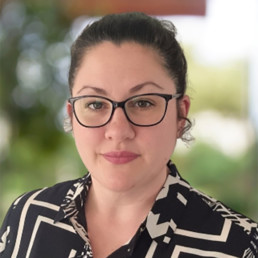
Written by Joanne Robinson
Joanne Robinson, BA, MA, PGCE, FCCT, is the Director for Training and Development at TeachUp, a company specialising in professional development for teachers in the UK and internationally. She has also led a number of teacher training programmes, including an iPGCE and an MA in Education with Pedagogy. Prior to this, she taught in secondary education for 16 years. She is keen to promote inclusive education that centres upon the wellbeing and autonomy of teachers as well as pupils.
Making the statement that cancer helped my daughter to survive school sounds quite alarming, but it is something that she and I have discussed at length over the years since this happened to her.
This blog is written with her permission. She is now 26 years old and thriving, so this did occur some time ago. However, the reason I’m writing this now is that I believe it is still resonant for school practices today.
Abigail was diagnosed with leukaemia in January 2011. She was 12 years old at the time, which is quite unusual for this type of cancer. She had just started Year 8 in the school I was also teaching at. Abi had already been diagnosed with Autism just before beginning in secondary. Since then, she has had a further diagnosis of ADHD.
Treatment for leukaemia was gruelling, with two bouts of intensive chemotherapy in the first nine months followed by two years of maintenance chemo. This was the standard protocol for girls back then, although it may have changed as cancer treatments evolve rapidly, thanks to fantastic research trials.
Children may experience some infection, but our consultant advised that life should be normal during the maintenance phase of treatment. However, because Abi was becoming a teenager and experiencing hormonal changes, we found that this wasn’t the case. In the end, she was hospitalised around ten times during her care. Some of those stays were over a month in length and at one, terrifying, point, she contracted neutropenic sepsis and was lucky to have survived.
Abi’s attendance in school was understandably low. It was a really hard two years and, in the end, she dropped back a year in order to regain some of the lost time.
School was brilliant with her. They provided her with a reduced timetable. Because she had very low immunity and her platelet levels meant she was vulnerable to bleeding from knocks and bruises, she was able to spend her breaks in the SEND inclusion room.
Before cancer, Abi was struggling in school because of the difficulties that she had due to her Autism. She found the high school environment very overwhelming to navigate. She was experiencing frequent meltdowns at home. During treatment, she was able to take school at an easier pace, spending time having respite in the SEND room and not forced to interact with other pupils at breaks unless she chose to. Suddenly, her school life was manageable for her.
After treatment ended, Abi’s needs were well-known. Chemotherapy has long-term effects on energy, so school was happy to continue with a reduced timetable and flexibility in allowing Abi breaks when she needed them. She was also in regular attendance in the SEND room. These things were there for her without her having to ask for them – self advocacy can be hard for any child, let alone those with communication difficulties (many time-out systems put the onus on the student to instigate them, which means they are never used).
By the time Abi reached her GCSEs, she did astonishingly well. She was then able to use a similar approach to her time in the school’s Sixth Form.
Abi has since said to me that the accommodations that school made for her cancer were what made it possible for her to complete her studies as a neurodivergent student. In my own teaching experience, I had witnessed many neurodivergent children being unable to cope by the time they reached GCSE: the sheer energy it took to mask every day through this stressful time, repressing behaviours that might be seen as strange by others, would result in them refusing to attend.
There is a lesson here. We have to adapt school practice to accommodate the fluctuating energy levels that occur with neurodivergence. These pupils are often academically capable and should be attaining great outcomes, taking those first steps into fulfilling adult lives. Instead, they are burning out in their teens. Simple changes can adjust the classroom to make it more accessible, and enabling respite or shorter days could be the difference between a neurodivergent child completing school or not.
It should not take a serious illness to ensure proper accommodations are made: neurodivergence is a disability that needs reasonable adjustment from the outset. I think the tide is turning and there is great work being done to raise awareness, but we have a way to go before we can claim with certainty that education is equitable for neurodivergent students.
How to lead a diversity research group
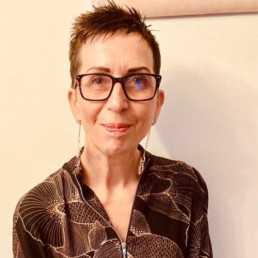
Written by Jayne Carter
Jayne is the Director of Ignite Education Ltd, providing consultancy for practitioners within the Early Years & Primary sector. She uses coaching a a model for change, facilitating professional conversations which are focused on empowering others & generating growth in knowledge & skills.
As part of the L.E.A.D Teaching School Hub’s extensive offer for EDI, I was invited to lead a diversity research group based on Bennie Kara’s fantastic book: Diversity in Schools. This blog is intended to support others who may wish to run similar groups for teachers and school leaders.
The research group was structured around one session per month for each book chapter. It worked well for each participant to read the focus chapter in preparation for the meeting, to be ready to discuss their reflections and implications for their own practice.
Discussions were facilitated around the key messages included in each chapter with the addition of extra resources focused on the needs of the group.
The aims of the research group included:
- To use research & literature as a tool for school improvement
- To develop a culture of peer-to-peer support & critical analysis
- To implement key strategies & approaches at a whole school level
Some of the attendees wanted to focus on whole school implementation, whereas others wanted to improve their own subject knowledge in preparation to share at school.
Each session included a planned gap task based on the focus of the chapter as well as an individual gap task which was identified by each attendee in order to meet the needs of their school.
For example, the third session focused on the chapter ‘How can we create a diverse classroom?’ Everyone carried out the audit included in the book. Individual gap tasks that were chosen included;
- sharing UNESCO inclusion research with members of their SLT
- exploring the free trial of Lyfta as a whole-school EDI resource
- considering how to organise their seating plan to ensure inclusivity
- evaluating the use of cold calling/trio conversations in their classrooms.
Time was planned into the following sessions to discuss reflections from the individual gap tasks and all resources were included in a workgroup padlet. The padlet worked well to ensure that everyone had constant access to key resources/research. It also provided an effective means of communication between meetings.
Being able to meet frequently with attendees helped me as a workgroup lead to understand the priorities for each school and what was important to them. As the meetings progressed, I was able to structure the sessions to become even more personalised to the group’s needs, with additional research and tools being shared and added to the padlet.
Over the seven sessions, attendees enhanced their EDI improvement plan or developed their own EDI plan. The next steps identified after each chapter supported these improvement plans by providing structure and focus.
During the final session the overall impact of and reflections about the workgroup were collected:
- All attendees found the structure of the workgroup useful as it moved from a training session to meetings which were collaborative and supportive of an action research improvement model.
- Attendees liked the planned gap tasks; especially the opportunity to carry out a shared task, which helped shared discussions but also a gap task which was personalised and prompted change at a school level.
- All attendees noted that the additional resources sourced and added to the padlet were valuable with everyone committing to using the padlet next academic year.
As the workgroup lead, the opportunity to guide attendees into analysing research was valuable as it gave me a useful reminder of day-to-day school priorities. One of my own personal outstanding reflections was the knowledge that the plans developed would be sustained as they had been developed carefully and with the vision of not only what needed to be in place but why.
My thanks to Bennie Kara for creating such an accessible and informative book. I hope that this blog encourages others to lead more reading groups or research groups on diversity in schools across the sector.
Diary of a Dyslexic Teacher
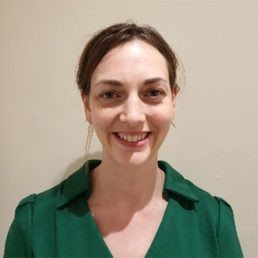
Written by Liz Boyer
Liz Boyer has dedicated 21 years to education, she specialises in EYFS and KS1. Liz has taught across phases in both the Independent and State sectors, most recently in inner-city schools that are wonderfully diverse in nature. Liz has held various school leadership roles and has devotedly mentored ITT/E students for 15 years. In 2021, she became a SCITT Tutor, and currently serves as Primary Lead for Bluecoat SCITT Alliance BSA. Starting in September 2024, Liz will begin her role as a Senior Lecturer at the University of Derby UoD, continuing her commitment to fostering excellence in education and developing the next generation of teachers. Liz is also dyslexic but doesn’t wish that to define her.
In 2021, I wrote a diary during a 10-day COVID isolation. Fast forward to today I am a Primary SCITT Lead at Bluecoat SCITT Alliance BSA within the Archway Learning Trust ALT. Here, I have the honour of collaborating with an array of exceptional trainee teachers, each with their own unique experiences. Some of these trainees have encountered the challenges associated with neurodiversity, and it is a privilege to support them as we navigate the dynamic landscape of teaching together. I firmly believe that every individual has valuable contributions to make, and I am committed to working with both trainees and educational institutions to ensure that everyone’s strengths are recognised and celebrated. Some schools actively champion colleagues of all backgrounds, while others are striving to achieve this inclusive environment. My primary support in this endeavour is Diverse Educators DE, an organisation that not only shapes policy but also guides schools as we navigate the era of inclusivity.
2021 Highlights
Day 1: Introduction
I am Liz Boyer, an educator with 18 years’ experience, whilst I have had many senior school roles I identify first and foremost as a teacher. What sets me apart from some others (although 20% of the population are with me) is my dyslexia, a facet of my professional life I typically do not emphasise however, I am not saying it should be hidden. Today, I aim to share insights, coping strategies, and reassurance for teachers—whether dyslexic or not—drawing from my own journey.
Day 2: Lists
Make a plan with tiny steps to kick start tasks, applicable beyond teaching. For instance, when tackling a long-term plan, start by just gathering necessary materials. Set a specific day and time for each step, adhering to it diligently. Embrace list-making to maintain momentum—I find ticking tasks off deeply rewarding.
- Write day 2 diary entry for blog.
Day 3: Mathematics
Reflecting on my own education in maths, I faced significant anxiety around numbers, which mastery, a concept absent in my schooling, would have alleviated. My breakthrough came shortly before my PGCE during a refresher course, highlighting missed fundamental concepts. Witnessing mastery in Early Years, I see its power in building confidence and comprehension, ensuring all students succeed.
Day 4: Level 7
For reluctant readers and writers aiming for academic credibility at Level 7, the demands on trainees, ECTs, and their mentors are undeniably higher than before. While high expectations for teachers are justified, they should come with increased trust and respect for the sector. Amidst such pressure, retaining and nurturing good teachers becomes crucial. Here are practical pointers for those feeling overwhelmed:
- Start with subjects that genuinely interest you, for me EYFS or ITT/E.
- Cultivate a network of trusted friends and colleagues who can help read and rephrase materials.
- Utilise social media groups for resources and support.
- Incorporate audiobooks or podcasts into your routine for multitasking.
- Engage in webinars or teaching hubs for ongoing, affordable support.
Day 5: Phonics
Balancing play, phonics, and literacy is challenging but crucial. Reflecting on my education and my son’s journey, I recognise the importance of time in learning to read and write. While the new EYFS framework is positive, there is still a lack of trust in children’s need for exploration and play. More emphasis on Phase 1 and language development in Reception is essential.
Day 6: Asking for Help
Accepting support is vital, even though I found it challenging in the past. My mum checked my work as a teenager, and although I found it embarrassing then, I now appreciate support from her or other trusted checkers.
Day 7: Making Mistakes
Mistakes are part of learning, but professionalism demands accuracy in communication. You also need to set a good example to children and I think that written and spoken English needs to be correct. Daily practice and support are essential for improvement, use flashcards and revision techniques just as you would with children. Senior Leaders need to play to people’s strengths and celebrate the creativity, ability to communicate and energy to name a few positive attributes that often come from pupils and teachers with dyslexia.
Day 8: Health and Resilience
Resilience is vital for teachers. Learning from setbacks and taking care of mental and physical health are crucial. After setbacks like nerves in interviews, it is important to learn and grow.
Day 9: Supply Teaching
Supply teaching offers valuable learning opportunities and keeps educators sharp. It allows observation of various school cultures and improves subject knowledge through diverse experiences.
Day 10: Conclusion
I hope you have found my experiences useful and that I have emphasised that having dyslexia or other learning needs need not be a barrier to teaching. Full blog available on request.
Inclusion Love Languages
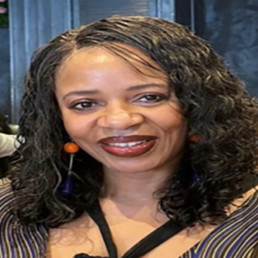
Written by Caroline Anukem
Caroline Anukem is Equity, Diversity and Inclusion Lead at Beaconsfield High School in the UK. She is a driving force, a change-maker, and a relentless advocate for equity.
Forget Acts of Service: The Love Languages Revolutionising Inclusion
Tired of the same old diversity and inclusion (EDI) initiatives that fall flat? It is time to do away with the generic and delve into a framework that speaks to the heart of belonging: Inclusion Love Languages.
Imagine this: You walk into a conference feeling a pit in your stomach. The name tags are impersonal, the panels lack diverse voices, and you struggle to find someone who “gets” your background. This is the opposite of inclusion. Now, picture a different scenario. You are greeted warmly with your preferred pronoun, the agenda reflects a range of perspectives, and breakout sessions offer opportunities for collaboration across differences. This – this – is inclusion in action.
Beyond Tolerance: A Celebration of YOU
Inclusion should not be about simply tolerating differences. It is about actively celebrating them. The “Love Languages” model, popularised by Gary Chapman, categorises how individuals receive and express love. I propose adapting this framework to inclusion, recognising that everyone has preferred ways of feeling valued and respected in a space.
What are YOUR Inclusion Love Languages?
Just like some crave words of affirmation from a partner, others might feel most included through mentorship opportunities or invitations to social gatherings. Think about your own preferences. Do you thrive in environments with clear expectations and open communication (Acts of Service)? Or do you feel most valued when your unique perspective is acknowledged and celebrated (Words of Affirmation)?
Understanding your own inclusion love language is just the first step. Now consider how you can identify and address the preferences of others. Perhaps a colleague or a fellow student feels most included through casual check-ins (Quality Time), while another appreciates being included in focus groups (Gifts – offering opportunities for contribution).
From Feel-Good to Functioning: The Power of Inclusion
True inclusion is not just about creating a warm and fuzzy atmosphere. It creates a sense of psychological safety, where individuals feel comfortable taking risks, sharing ideas freely, and being their authentic selves. This, in turn, unlocks a treasure trove of benefits:
- Innovation Unleashed: Diverse perspectives combined with psychological safety create a breeding ground for ground-breaking ideas.
- Engagement on Fire: Feeling valued motivates people to bring their best selves to work, leading to increased productivity and engagement.
- Collaboration Takes Flight: A sense of belonging improves teamwork and inevitably reduces conflict, thus creating a more positive and collaborative environment.
Speaking Your Inclusion Love Language: Building a Thriving environment
By understanding the “inclusion love languages,” we can move beyond a one-size-fits-all approach. This reframing equips us with practical tools to cultivate a culture of belonging, the foundation for a truly thriving and equitable working or learning environment.
What Could Sustainable Teacher Recruitment Campaigns Look Like?
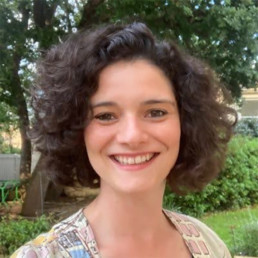
Written by Emma Sheppard
Emma founded The MTPT Project, the UK's charity for parent teachers, in 2016 when on maternity leave with her first child. She has 12 years experience as an English teacher, Lead Practitioner and ITT Lead, and now runs The MTPT Project full time.
When I trained to teach in 2010, I was drawn into the profession by the motivation to Make a Difference. I wanted to be a Changemaker; to have Social Impact; to Do Good. And I was willing to work all hours and make sacrifices to – essentially – satisfy my guilty white saviour complex.
Maybe that’s a little cutting: after all, a sense of moral purpose and the pursuit of meaningful work are values to live and stand by.
But, two years later, after missing holidays with my family, developing chronic migraines and unable to identify any other hobbies beyond the bassoon that I had once enjoyed (but no longer had time to play), I burnt out and quit UK education for a stint in an international school, and the luxury of an expat lifestyle.
Vivid memories of two recruitment videos remain with me from this time. In the first, a young man rides to school in the dark, and is the first in the building to switch on the lights. He excels at his job, cares for his students. At no point do we see him doing anything other than living and breathing teaching.
In the second, a young man wakes up, arrives at school, and we jump between his previous office job (dull) and his current teaching role (fulfilling). At dinner time, he talks about how great teaching is and then gets into bed, and the cycle repeats itself. At no point is there anything in his life other than teaching (and the back of his girlfriend’s head).
There is nothing incorrect about either advert: teaching is a brilliant and life-affirming career. And – let’s admit it – as teachers, we do love to regale our friends and family members with hilarious school anecdotes at every opportunity. The kids are the best bit. Indeed, both adverts are powerful appeals to potential recruits who want to do nothing but teach.
But for how long do we want to – or are we capable of – martyring our whole lives to our profession?
Surely, if we want to see improved teacher retention, we need recruitment campaigns that sell teaching as a career choice that allows for a life beyond the classroom?
This is where a recent video from Reach Teacher Training has got things so right. Like the videos previously mentioned, this advert follows two teachers from the start to the end of their working day, but the marketing team behind this piece have made some deliberate directorial decisions about the culture that new recruits can expect at Reach.
In the first iteration of the video – a 29 second clip – Reach dedicate 6 seconds to images of one of the teachers hugging her own child and waving goodbye at the door before she drives away. That is 21% of expensive marketing time given over to stating that teaching is a family-friendly career choice – at least at a Reach Academy.
In the second version of the video, Reach set aside a glorious 23 seconds (of 55 seconds in total, so 42% of the entire clip) to the life-friendly nature of their school. The first teacher joins her running club to run home with her pals in the sunshine. Meanwhile, we zoom in to the second teacher closing her laptop and checking her watch as she finishes her day. Her watch says 15:54 and, presumably, she’s on her way to school pick-up.
In both videos, we see the teachers enjoying animated conversations with their students. We see them delivering excellent lessons. We see them Making a Difference.
Indeed, the text that accompanies the social media posts sharing these videos reads: Join our community; Change lives; Train to teach.
But unlike those adverts that drew me into a military lifestyle of teaching that – as a 22-year-old with no real prior experience of the workplace – I could not sustain, these adverts state very clearly that the dream is possible. Teaching is a life-friendly career, state Reach, and one that you can enjoy for years to come around all the other beautiful moments that life will offer you.
Bravo, Reach Teacher Training, and the team behind your recent recruitment video.
Pride Month 2024 - Responding to homophobic language: guidance for schools using Oracy and No Outsiders
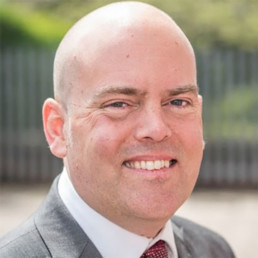
Written by Andrew Moffat
Andrew Moffat has been teaching for 25 years and is currently PD Lead at Excelsior MAT. He is the author of “No Outsiders in our school: Teaching the Equality Act in Primary Schools” and “No Outsiders: everyone different, everyone welcome”. In 2017 Andrew was awarded a MBE for services to equality and diversity in education and in 2019 he was listed as a top ten finalist in the Varkey Foundation Global Teacher Prize.
Ensuring equality for all cannot be achieved if any group of people feel they are unseen, unwelcome or feel targeted because of the person they are. As teachers, we strive to ensure that everyone feels seen, everyone feels welcome, and no one feels they have to hide their true selves, or parts of their identity.
In preparing children for life in modern Britain, we need to be clear and consistent in our efforts to make schools a safe place where children understand there are different ideas in society and prejudice may exist in the outside world, but prejudice and discrimination do not exist here, because in our school, there are “No Outsiders” and everyone is welcome.
Children are allowed to hold different views. I am a big champion of oracy as it encourages children to see both sides of a debate and understand it is possible to hold two views at one time. However, while different views are embraced, the othering of a group of people is not allowed. A child can disagree with a point of view and still show respect; this is the golden thread of a no outsiders ethos.
If a child chooses to use homophobic language, this must be tackled immediately. Children must understand there is no tolerance of prejudice at our school. It is the job of any adult to respond to homophobic language, as this is a safeguarding issue (KCSIE, 2023, “Children who are LGBT” page 51),
A quick response is; “Excuse me?” or, “What do you mean by that?” followed by, “And what do we say at our school?” to which the expected reply is “There are no outsiders”. Reiterate, “That’s right, there are no outsiders here, so you need to think about the language you are using. How are you going to put that right?”
All homophobic incidents should be recorded, and parents informed.
If homophobia arises in a debate where no individual is being targeted but there are attitudes forthcoming that need to be addressed, make sure they don’t go unchecked. An oracy framework enables us to challenge such attitudes effectively by asking the class to respond; “Would anyone like to respond to that?”. If the comment is offensive, for example if a child says, “gay people are wrong” it’s important that the adult responds immediately along the lines of;
“Can we think about the language we are using here… those ideas may exist in the outside world, but we need to be really careful about the words we use here. To say something is ‘wrong’ is different to saying, you ‘don’t agree’ with it. Do you want to re-phrase so that you are not othering anyone or being offensive?”
“What does the law say about this?” (The Equality Act, British law says it’s ok to be LGBT)
“What do we say at our school about different people?” (We say there are no outsiders, and everyone is welcome here.)
It’s vitally important the teacher addresses the attitudes while not giving their own opinion so we don’t get in to an argument or lead the children down any particular path. What we need to do instead is remind children it is ok to hold different views (“and that’s what makes this debate so interesting”) and we can still show respect and non-judgement. It’s ok to disagree with one another, the important thing is that everyone still feels they have a place here, including the child who is being offensive. It is the child’s views that are not welcome; the child is still welcome.
If a child brings their faith into the discussion; “My religion says it’s wrong”, respond in this way:
“You’re right, there are different views about this in different religions. And that’s the best thing about living in the UK- we have different views and beliefs, freedom of speech and democracy, and we have the Equality Act which protects religion and belief, so people are allowed to hold those views under British law. Who else is protected under the Equality Act? (disability, age, race, pregnancy and maternity, marriage and civil partnership, sex, LGBT) hmmm that’s interesting isn’t it – on the one hand you have religion and belief and on the other you have LGBT … both protected, both allowed… so I suppose we have to find a way to respect both views. We can co -exist without saying the other is wrong….”
And then open out the conversation, move it along using the oracy technique; “Who wants to build on that?”
Keep coming back to “That’s why we say there are no outsiders… we can have different opinions, and we can still respect each other. No one is pushed out because of their religion, their race, or because of their sexual orientation.”
I recognise that these conversations are not easy but they are important and we need to be having them with our children. My advice is to practice responses with each other as a staff team.
Here are some useful assembly links from www.no-outsiders.com:
https://no-outsiders-assembly.blogspot.com/2024/05/pride-2024.html
Assembly pictures : Football shirt (no-outsiders-assembly.blogspot.com)
Assembly pictures : football (no-outsiders-assembly.blogspot.com)
Assembly pictures : Bathroom (no-outsiders-assembly.blogspot.com)
Assembly pictures : Beano (no-outsiders-assembly.blogspot.com)
Assembly pictures : LGBT history month (no-outsiders-assembly.blogspot.com)
Assembly pictures : What is homophobia? (no-outsiders-assembly.blogspot.com)
Assembly pictures : Curly hair (no-outsiders-assembly.blogspot.com)
https://no-outsiders-assembly.blogspot.com/2024/06/veteran.html
South Asian Heritage Month: free to be me.

Written by Zahara Chowdhury
Zahara is founder and editor of the blog and podcast, School Should Be, a platform that explores a range of topics helping students, teachers and parents on how to ‘adult well’, together. She is a DEI lead across 2 secondary schools and advises schools on how to create positive and progressive cultures for staff and students. Zahara is a previous Head of English, Associate Senior Leader and Education and Wellbeing Consultant.
This year’s theme for SAHM is beautiful: free to be me. As we celebrate lived experiences, storytelling and authenticity, it seems only right that freedom and embracing our individual narratives is next.
This year’s theme has made me think where have I felt my most free? It’s not an easy question to answer. You see, growing up South Asian, (in my case, a British Pakistani Muslim, who’s family was born and raised in Africa), masking your identity can often feel normal, particularly when masking makes you feel safe in public, school and at work. Returning home, comes with its own comforts and conflict: finding joy in your culture and sticking out because you don’t really ‘fit’ within it either. Freedom then becomes a rather grey area and one that does not feel easily attainable.
Over the years, particularly I adulthood, there are a few spaces where I have come close to ‘free’: one was in my classroom. When teaching, my classroom was predominantly full of students who looked like me, shared similar lived experiences and most importantly we connected over an understanding of shared ambitions, aspirations and values. I felt free in an office with a colleague who shared my heritage; breaktimes and lunchtimes were full of laughter, candid conversations and asking each other, ‘what did your mum use to store atta in the kitchen?’, ‘were your sofas covered in shrink wrap too?’
Since then, I have felt most free in conversation with South Asian educators across the sector, most recently in conversation learning all about the wonders of Pehalwaan Juice (if you know you know…I definitely didn’t!). In many ways I share this with caution: for someone who works to amplify diversity, is there a problem if my freedom is sought and felt within my own community? Do I then just enjoy being a part of my own echo chamber?
The answer is no. Within these spaces diversity thrives. Diversity of thought, feelings, faith, work, experiences – being South Asian does not make us all one and the same and every South Asian friend, colleague and student I have connected with has a different story and identity. If anything, the freedom I feel in these spaces makes me more determined to centralise my identity in mainstream spaces too.
My childhood and teen years were branded with the term ‘coconut’ – in many ways, I didn’t think much of it then and I don’t think much of it now. What I do think about now though is how the identity of a ‘coconut’ lacked freedom. Consciously and subconsciously (and I really hope fellow South Asians can relate) I spent my childhood and adolescence straddling between several identities, depending on the audience – and I happened to be pretty good at it; I still am (we are pros when it comes to masking). I (still) do not know enough about my heritage, and I still don’t feel very ‘white’ either. Perhaps this is what imposter really means.
I studied all of this at university, wrote about it for my dissertation. 15 years later, specialising in a field that very much reflects the truth of my life couldn’t be more imperfectly perfect, no matter how much I question it on a daily basis (awareness and celebratory months are only one piece of the ‘work’). If anything, my experiences as a teacher and now EDI trainer, speaker and consultant are in some ways liberating and in other ways, revealing of just how far ‘we’ (marginalised and minorities in the West) have to go to be free.
South Asian Heritage is rich, diverse, nuanced and just huge – I am so naive and ignorant of its beauty. There is so much to learn. I’m not sure I’m free to be me just yet…but I think (and hope) we’ll get there soon.
In light of this and all of the learning and connections we have to make, I’m excited to share a space, network and group for South Asian Educators to connect, talk and be. Assistant Headteacher and Author, Yamina Bibi has said, the network will be a space ‘for anyone who is looking for a safe space for those of South Asian heritage. The challenges and issues facing South Asian Educators is somewhat different to those from other heritage groups as they are often thought of as the hard workers, obedient, quiet, shy, oppressed by colleagues and society in general. This network will support more educators to have their unique voices heard.’ We want this network to be collaborative, safe, empowering and a community where we can learn from one another too. Please Join us here!

